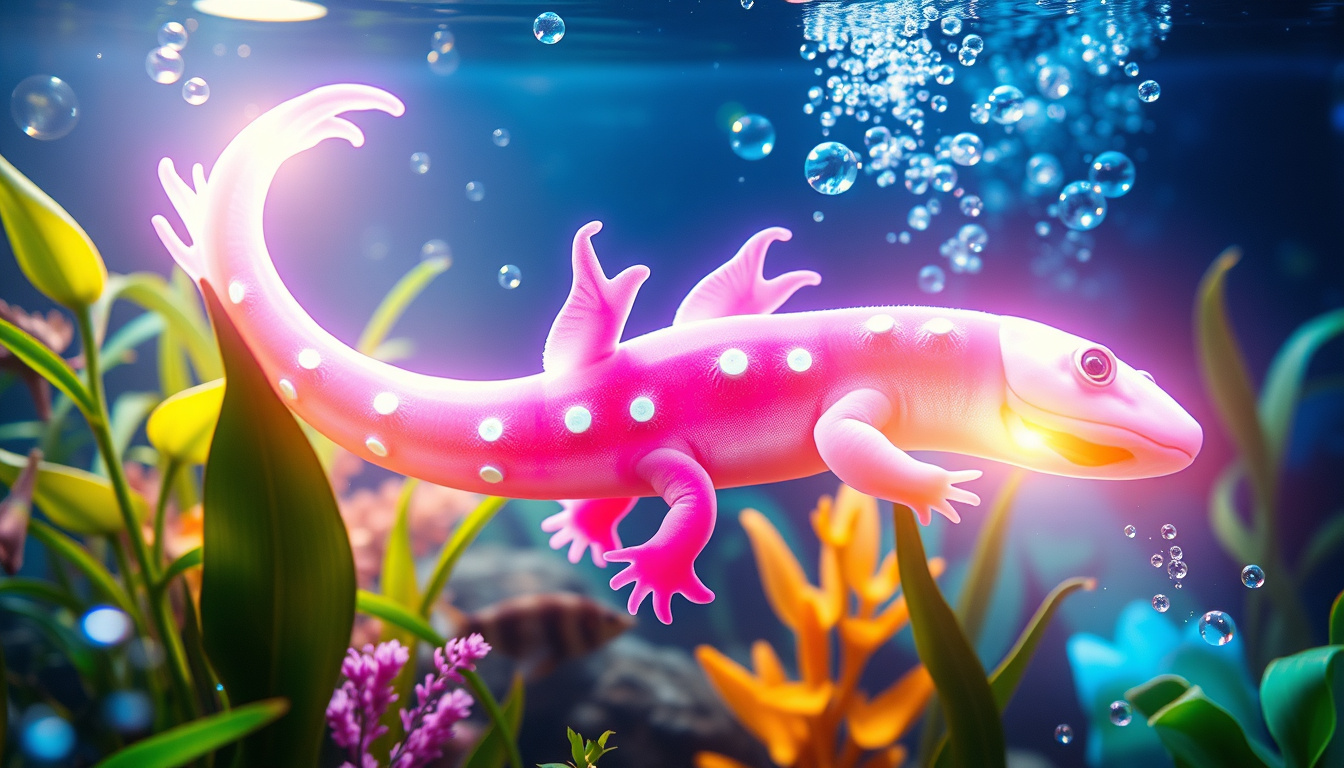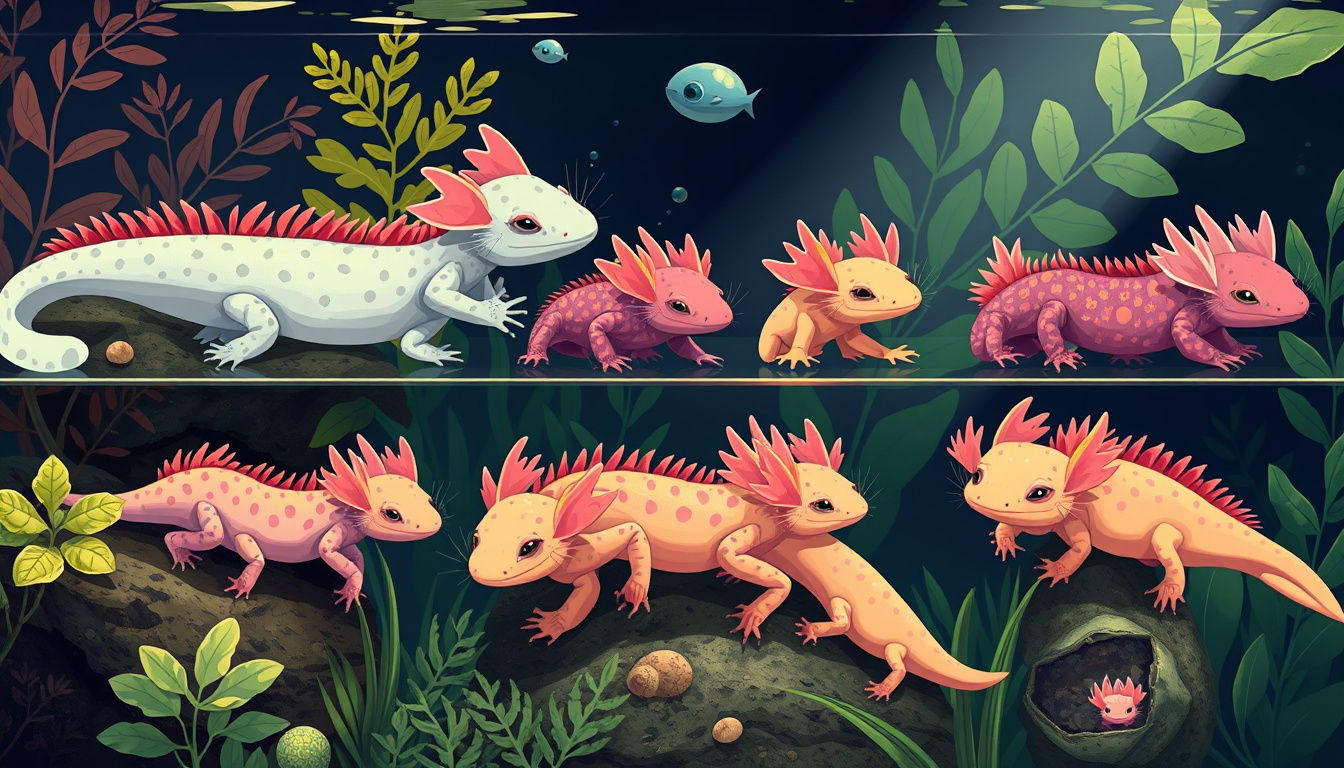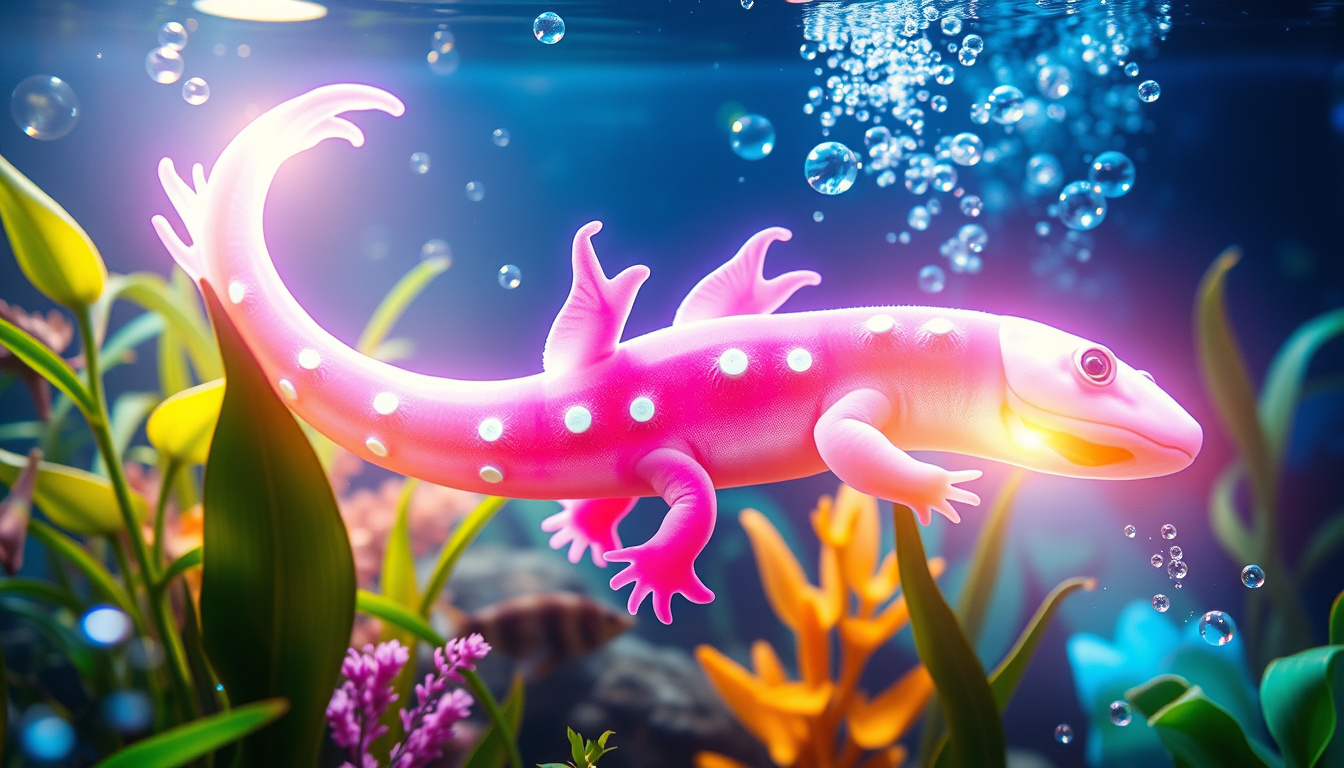Have you ever heard of the axolotl?
This unique creature, often called the ‘Mexican walking fish,’ is not actually a fish at all but an extraordinary amphibian!
Known for its striking feathery gills and ability to regenerate limbs, the axolotl presents a fascinating subject for young nature enthusiasts.
One of the most intriguing aspects of the axolotl’s life cycle is its metamorphosis – a transformative journey that takes it from a juvenile stage to adulthood.
In this article, we’ll dive deep into the enchanting world of axolotl metamorphosis, exploring how these incredible animals navigate their changes, what influences their development, and the importance of conserving their habitat for future generations.


The Role of Hormones in Axolotl Development
Axolotl metamorphosis is a fascinating process that transforms these unique amphibians from larval stages into their adult forms.
A critical player in this transformation is hormones, which regulate various developmental processes.
In axolotls, the presence of thyroid hormones is particularly important as they signal the onset of metamorphosis.
These hormones prompt significant physical changes, such as the development of limbs and the reabsorption of the larval tail.
Interestingly, many axolotls in the wild are neotenic, meaning they retain their juvenile features into adulthood and do not undergo full metamorphosis unless exposed to higher levels of these hormones.
Studying the hormonal pathways in axolotls not only helps us understand their unique lifecycle but also provides insights into developmental biology that could inform research in other species, including humans.
As you explore the incredible world of axolotl metamorphosis, you’ll discover how these remarkable creatures adapt and thrive in their environments.
Impact of Metamorphosis on Axolotl Habitat and Behavior
The axolotl metamorphosis is a fascinating biological process that has significant implications for both their habitat and behavior.
Unlike many amphibians that undergo a distinct transformation from larva to adult, axolotls often retain their juvenile features even when they reach sexual maturity, a phenomenon known as neoteny.
This unique trait allows them to thrive in aquatic environments, as they retain their gills and a fully aquatic lifestyle.
However, when environmental conditions such as the availability of food or the presence of stressors change, axolotls can undergo metamorphosis, shedding their juvenile characteristics to develop into a more typical terrestrial form.
This shift alters their behavior; for instance, those that metamorphose may exhibit changes in feeding habits and territoriality, reflecting a stronger competition for resources outside their usual aquatic habitat.
Understanding axolotl metamorphosis not only sheds light on their adaptability but also raises important questions regarding habitat conservation, particularly as urbanization and climate change threaten their native lakes in Mexico City.
By recognizing the impact of these transformations, conservation efforts can better focus on preserving the delicate balance of the axolotl’s ecosystem.
Frequently Asked Questions
What is axolotl metamorphosis?
Axolotl metamorphosis refers to the process through which axolotls transition from their larval stage, characterized by external gills and aquatic features, to their adult form, which typically involves the development of lungs and the loss of gills.
What are the stages of axolotl metamorphosis?
The stages of axolotl metamorphosis include the larval stage where they have external gills, the transition phase where they begin to develop lungs, and the adult stage where they possess fully developed lungs and lose their larval characteristics.
What environmental factors can influence axolotl metamorphosis?
Environmental factors such as water temperature, light exposure, and the presence of certain hormones can significantly influence the metamorphosis process in axolotls, often triggering or inhibiting their transformation.
How do hormones affect axolotl development?
Hormones play a crucial role in axolotl development, particularly in regulating the metamorphic process.
Thyroid hormones, for example, are essential for initiating the physical changes associated with metamorphosis.
What conservation efforts are in place for axolotls?
Conservation efforts for axolotls include habitat protection, breeding programs in captivity, and awareness campaigns aimed at highlighting the importance of preserving their natural environment and the threats they face in the wild.

